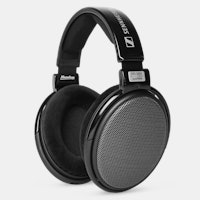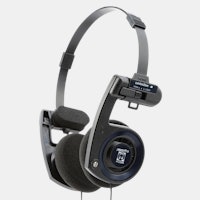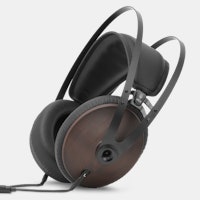Click to view our Accessibility Statement or contact us with accessibility-related questions











Amps and DACs?

search
close
Sort by: Newest
keyboard_arrow_downsteelclaw1313
1
Nov 19, 2017
So all that being said, does anyone have any recs on good entry level tables/amps/speakers/headphones? I'm not necessarily on a super tight budget, but not looking to spend thousands, ya feel?
Thank you all, again, for your help.
Thank you all, again, for your help.
steelclaw1313
1
Nov 15, 2017
I guess my next question would be..
Is a DAC and Amp combo like some other tech combos where it's not as good if they're in one unit? So, is it better to get them separately or is a combo usually sufficient? Well.. I guess "sufficient" is a bit subjective.. but y'all get it.
Is a DAC and Amp combo like some other tech combos where it's not as good if they're in one unit? So, is it better to get them separately or is a combo usually sufficient? Well.. I guess "sufficient" is a bit subjective.. but y'all get it.

shimage
228
Nov 15, 2017
steelclaw1313"Sufficient" is entirely dependent on your budget. This stuff isn't difficult to design or manufacture. All-in-one is going to be fine. Separate is also fine. They are all going to measure the same, for the most part, and in a blind test they will also sound the same. Sighted, there is a good chance you will hear differences. Sighted listening is, I guess, more important than blind in the sense that that is how you will be listening to music. But I won't give you advice based on what your brain may or may not make up out of thin air. Lots of people like to do this, but for me it seems disingenuous. My advice is to always demo before buying, or to buy from a place that allows returns (eg, schiit). That way your satisfaction is in your hands alone.
As for specifications (I didn't see anyone go through this below), the ones usually given are frequency response, THD+N, crosstalk and for amps probably power output as well. Less often you will see output impedance and IMD measurements.
Frequency response should be flat. If it isn't then something is wrong and you should probably avoid it (dac or amp). That's all there is to say about that.
For distortion, it is surprisingly difficult to hear distortion of any kind <1% in anything other than optimal conditions. Total system distortion <0.1% is attainable, though, and not particularly difficult to do.
THD is harmonic distortion. Basically, when fed a sine wave, any periodic deviation from that in the output (meaning it happens the same in each wave) is going to be captured by THD. Clipping and crossover distortion are examples of harmonic distortion. For THD, DACs don't have as much to do, so usually you expect the distortion to be lower (say, <0.01%). Ideally, they will give THD as a function of frequency (with stated output levels), but this is fairly uncommon. One manufacturer that does is Topping, and you can see from their graph of the D30 that THD tops out at around 0.0008% (THD for signals >10kHz are irrelevant). For amps, I would say <0.1% is probably fine, but I expect <0.01% under load (that is, driving 30Ohm or so headphones) over the entire spectrum. This is not difficult to find, and in fact most decent cellphones manage this easily.
Intermodulated distortion is distortion caused by the presence of multiple frequencies at the same time (a fairly common situation in music, obviously). IMD is usually higher, but it often isn't reported, or if it is, they don't report it properly (what is the load, what are the two frequencies used, what are the levels for each?). Ideally, you would have measurements for a variety of pairs of frequencies, but this is never done except by individuals curious about their gear. As with THD, this should be <0.01%. A lot of cellphones have problems with this, but some do fine (Samsung, LG, Apple). Pretty much any desktop amp should be able to manage this, but some little ones, like iFi's products, have issues somehow. The popularity of the dragonfly suggests that it isn't terribly audible, but still... value for money and all that.
Power output doesn't really matter, so long as it gets loud enough. A gain switch is nice to have, if you have a variety of headphones with different impedances and efficiencies. Keep in mind that even very inefficient headphones need at most several milliwatts to get to ear-bustingly loud volumes. If your source doesn't put out linelevel, then you'll need a bit more gain. However, the importance of power output is usually overstated. The other thing to worry about is that if you listen at very low volumes, or have too much gain, you may end up all the way on the quiet end of the volume pot. The problem with this is that that is where pots have noticeable channel imbalances. You can always stick an in-line attenuator somewhere so this isn't that big a problem, honestly.
Output impedance is a bit of a wash. Standard practice is that output impedance should be a factor of 8-10 less than the impedance of the load (ie, the headphone). If it is not, weird things can happen (usually, a boost to the bass/lower mids). For example, this resistance can mess with crossover circuits found in multi-BA IEMs. Dynamic headphones pretty much always have a resonance in the bass with a commensurate increase in the impedance; this is what causes the bass boost with OTL tube amps. Some people like the weird things that happen. Some headphones are designed with sizable output impedances in mind (eg, both Sennheiser's and Beyerdynamic's headphone amps have ~100Ohm output impedance). So ... buy whatever you want. It bears mentioning, though, that planars are resistive loads and aren't affected by non-zero output impedance aside from a drop in overall volume level.
Crosstalk doesn't matter. Even the worst amps have crosstalk ~-50dB, which is inaudible and isn't going to affect soundstage or imaging in a real way. Could have effects in sighted listening, but whatever. No one complains about crosstalk in loudspeaker systems.
Jitter. This used to be a problem for poorly designed dacs, but it isn't anymore. Don't worry about it. Even the lowly Fiio E10 (long ago superseded by the E10k) has good enough jitter rejection.
I almost forgot! phase response! Nobody cares. Look at the phase response of the HD800 and tell me that it matters. The O2 is only off by 8deg, and even then only in low frequencies where it doesn't matter. Airist really wants you to care, but you shouldn't.
As for specifications (I didn't see anyone go through this below), the ones usually given are frequency response, THD+N, crosstalk and for amps probably power output as well. Less often you will see output impedance and IMD measurements.
Frequency response should be flat. If it isn't then something is wrong and you should probably avoid it (dac or amp). That's all there is to say about that.
For distortion, it is surprisingly difficult to hear distortion of any kind <1% in anything other than optimal conditions. Total system distortion <0.1% is attainable, though, and not particularly difficult to do.
THD is harmonic distortion. Basically, when fed a sine wave, any periodic deviation from that in the output (meaning it happens the same in each wave) is going to be captured by THD. Clipping and crossover distortion are examples of harmonic distortion. For THD, DACs don't have as much to do, so usually you expect the distortion to be lower (say, <0.01%). Ideally, they will give THD as a function of frequency (with stated output levels), but this is fairly uncommon. One manufacturer that does is Topping, and you can see from their graph of the D30 that THD tops out at around 0.0008% (THD for signals >10kHz are irrelevant). For amps, I would say <0.1% is probably fine, but I expect <0.01% under load (that is, driving 30Ohm or so headphones) over the entire spectrum. This is not difficult to find, and in fact most decent cellphones manage this easily.
Intermodulated distortion is distortion caused by the presence of multiple frequencies at the same time (a fairly common situation in music, obviously). IMD is usually higher, but it often isn't reported, or if it is, they don't report it properly (what is the load, what are the two frequencies used, what are the levels for each?). Ideally, you would have measurements for a variety of pairs of frequencies, but this is never done except by individuals curious about their gear. As with THD, this should be <0.01%. A lot of cellphones have problems with this, but some do fine (Samsung, LG, Apple). Pretty much any desktop amp should be able to manage this, but some little ones, like iFi's products, have issues somehow. The popularity of the dragonfly suggests that it isn't terribly audible, but still... value for money and all that.
Power output doesn't really matter, so long as it gets loud enough. A gain switch is nice to have, if you have a variety of headphones with different impedances and efficiencies. Keep in mind that even very inefficient headphones need at most several milliwatts to get to ear-bustingly loud volumes. If your source doesn't put out linelevel, then you'll need a bit more gain. However, the importance of power output is usually overstated. The other thing to worry about is that if you listen at very low volumes, or have too much gain, you may end up all the way on the quiet end of the volume pot. The problem with this is that that is where pots have noticeable channel imbalances. You can always stick an in-line attenuator somewhere so this isn't that big a problem, honestly.
Output impedance is a bit of a wash. Standard practice is that output impedance should be a factor of 8-10 less than the impedance of the load (ie, the headphone). If it is not, weird things can happen (usually, a boost to the bass/lower mids). For example, this resistance can mess with crossover circuits found in multi-BA IEMs. Dynamic headphones pretty much always have a resonance in the bass with a commensurate increase in the impedance; this is what causes the bass boost with OTL tube amps. Some people like the weird things that happen. Some headphones are designed with sizable output impedances in mind (eg, both Sennheiser's and Beyerdynamic's headphone amps have ~100Ohm output impedance). So ... buy whatever you want. It bears mentioning, though, that planars are resistive loads and aren't affected by non-zero output impedance aside from a drop in overall volume level.
Crosstalk doesn't matter. Even the worst amps have crosstalk ~-50dB, which is inaudible and isn't going to affect soundstage or imaging in a real way. Could have effects in sighted listening, but whatever. No one complains about crosstalk in loudspeaker systems.
Jitter. This used to be a problem for poorly designed dacs, but it isn't anymore. Don't worry about it. Even the lowly Fiio E10 (long ago superseded by the E10k) has good enough jitter rejection.
I almost forgot! phase response! Nobody cares. Look at the phase response of the HD800 and tell me that it matters. The O2 is only off by 8deg, and even then only in low frequencies where it doesn't matter. Airist really wants you to care, but you shouldn't.
ohsigmachi
232
Nov 11, 2017
I'm no expert, but basically, all of your consumer electronics "CE" (computer, phone, iPod, etc.) have some kind of amp/dac built into them. But they are often compromised in architecture or quality due to either size or cost restraints.
Moving these components outside of the form factor of your CE gear allows you to overcome many of those compromises.
DAC: digital to analog converter. The electrical signal that speaker diaphragms react to is analog (think manipulation of a wave's form and frequency on spectrum analyzer). Digital Music doesn't start life in this form, it's encoded into binary information packets (1s and 0s). The DAC takes the binary, and as faithfully as possible, translates that to an analog signal.
AMPs: The Amp takes that(often very weak) analog signal from that DAC and amplifies it to have enough energy to actually move the speaker's physical architecture, which in turn produces sound.
Moving these components outside of the form factor of your CE gear allows you to overcome many of those compromises.
DAC: digital to analog converter. The electrical signal that speaker diaphragms react to is analog (think manipulation of a wave's form and frequency on spectrum analyzer). Digital Music doesn't start life in this form, it's encoded into binary information packets (1s and 0s). The DAC takes the binary, and as faithfully as possible, translates that to an analog signal.
AMPs: The Amp takes that(often very weak) analog signal from that DAC and amplifies it to have enough energy to actually move the speaker's physical architecture, which in turn produces sound.
steelclaw1313
1
Nov 15, 2017
Gotcha. So, in other words, a DAC is a DAC is a DAC. It just serves one function and it doesn't vary much. Okay. Simple enough it seems. So I guess there's not much reason to spend hundreds on a DAC.

Jackula
1746
Nov 15, 2017
steelclaw1313It depends on how much presentation means to you. My personal opinion is as long as you can't tell the difference, then there's no need to upgrade to a much more expensive DAC.
I also think that everyone will eventually be able to hear the differences in presentation between DACs, it is inevitable. When you first break into the audiophile world, it's new and your ears aren't used to it. Once your ears gain some XP and level up, they will be more sensitive to variations in presentation.
I also think that everyone will eventually be able to hear the differences in presentation between DACs, it is inevitable. When you first break into the audiophile world, it's new and your ears aren't used to it. Once your ears gain some XP and level up, they will be more sensitive to variations in presentation.
PRODUCTS YOU MAY LIKE
Trending Posts in Audiophile
MusicLvr
Drop x Campfire Audio Darkstar Review
The Darkstar definitely has a a unique sound that has an audiophile sub-bass bias. It is a balanced sound with open sounding mids and well extended treble. There is no mid-bass bloat thanks to...
Dec 4, 2024
bill.davies
BMR2 discounts for BMR1 owners
How about providing a BMR2 discount for BMR1 owners? Most of the "improvements" in the next gen should really have been there in the first which was a pretty big disappointment for most of us.
Dec 3, 2024

mojohomes90
District 25 Nambiar: A Premium Residential Destination
Nestled in the serene yet well-connected locale of Bengaluru,district 25 nambiar Builders stands as a premium residential destination that blends modern luxury with thoughtful design. Known for their expertise in crafting high-quality living spaces, Nambiar Builders have once again delivered a masterpiece with District 25, appealing to homebuyers who seek an elevated lifestyle within a peaceful environment. Location Advantage One of the most compelling features of District 25 Nambiar is its location. Situated in a well-developed area of South Bengaluru, it offers easy access to key city hubs while maintaining the tranquility of a suburban setting. Major IT parks, educational institutions, healthcare centers, and retail destinations are all within close proximity, making it an ideal choice for working professionals and families alike. Its strategic location allows residents to enjoy the best of both worlds—urban connectivity and a serene living experience. Architectural...
Dec 3, 2024
drPOGI
DROP BMR1 Broken?
Can anyone help me with this? Went away for dinner and came back home to my speakers making this static sound(Video Link). Its like this both in Line In and Bluetooth mode. These speakers were super super hot but I was told that it was normal for it to be this way. Sucks that literally I am just about two months out of the 1 year warranty :/ If anyone can help me that'd be great.
Dec 3, 2024
Thecricbet9
Experience Real Thrills with Cricbet99 Live Cricket Bets
Cricket, often called the "gentleman's game," has evolved into one of the most exciting sports globally, captivating millions of fans. With the rise of online sports betting, fans now have the opportunity to elevate their passion for cricket to new heights. Cricbet99 offers a thrilling and immersive live cricket betting experience, making it the ultimate platform for sports enthusiasts who want to combine their love for cricket with the excitement of live wagering. At Cricbet99, the thrill of cricket betting goes beyond just placing a bet; it’s about feeling the adrenaline rush as the game unfolds in real-time. Whether you’re a seasoned bettor or a newcomer, Cricbet99 provides a user-friendly interface designed to cater to all levels of experience. The platform’s live betting feature allows you to place wagers as the action happens on the field, bringing you closer to the game than ever before. Every ball bowled, every run scored, and every wicket taken creates a new opportunity to...
Nov 28, 2024














If there is anyone willing to give me a short (or long.. I guess it doesn't really matter) explanation for each and what/who they're primarily for, and also what to look for in them, I would be much appreciative!
Thank you all in advance!